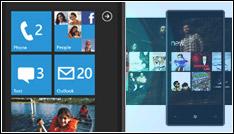Nokia Had Little Choice Over Win Phone 7, Says IDC

An IDC analyst has said that Nokia had little choice other than to adopt Windows Phone 7 going forward
Nokia’s declining smartphone market share and falling sales has attracted analyst worries about when its deal with Microsoft will eventually pay off.
But for those questioning Nokia’s current strategy – i.e. announce the aforementioned deal, and then wait a few quarters until releasing Windows Phone devices into the market – at least one analyst is suggesting the Finnish phone maker really didn’t have a choice.
“Nokia had to announce early its adoption of the Windows Phone platform because it had to take important cost write-downs in R&D that would have been impossible to hide,” IDC analyst Al Hilwa wrote in a 25 July research note.
Symbian Albatross?
Even if Microsoft and Nokia had managed to keep the deal a secret, he added, Nokia would have still faced significant declines in its smartphone market share. “For one thing, the Symbian R&D albatross would have continued to hobble Nokia’s profitability and its ability to make change,” he wrote, “for another thing, the platform dithering and in-fighting would have continued and leaked out anyway.”
He also hinted at the possibility that the deal could still result in a “successful, focused and growing Nokia.” That’s despite the company’s current declines in net sales and operating profit.
There was a time in the not-too-distant past when Nokia still held a lion’s share of the global market for phones. However, facing competition from the likes of the Apple iPhone and Google Android, Nokia has lost ground in both high- and low-end market segments. CEO Stephen Elop’s solution was to abandon the company’s homegrown Symbian operating system in favour of Windows Phone, even though the latter is also suffering from a notable lack of marketplace traction.
Nokia Gamble
“The challenges we are facing during our strategic transformation manifested in a greater-than-expected way in Q2 2011,” Elop wrote in a 21 July statement accompanying his company’s latest quarterly results. “However, even within the quarter, I believe our actions to mitigate the impact of these challenges have started to have a positive impact on the underlying health of our business.”
 In June, Elop offered an audience a glimpse of what looked like a Nokia N9 smartphone running Windows Phone. The N9, which currently runs a MeeGo operating system slated for mothballing by Nokia, married a curved 3.9-inch AMOLED (active-matrix organic LED) screen to a body engineered from a single piece of polycarbonate. Presumably, other devices are in the pipeline, as well.
In June, Elop offered an audience a glimpse of what looked like a Nokia N9 smartphone running Windows Phone. The N9, which currently runs a MeeGo operating system slated for mothballing by Nokia, married a curved 3.9-inch AMOLED (active-matrix organic LED) screen to a body engineered from a single piece of polycarbonate. Presumably, other devices are in the pipeline, as well.
Having been locked into its current strategy – if you subscribe to Hilwa’s theory – Nokia has little choice but to hitch itself to Microsoft’s wagon. For its part, Microsoft hopes that its upcoming “Mango” update will increase Windows Phone’s appeal to its target audience. It’s a huge bet for both companies, one made harder when you consider how its rivals will have new, ultra-advanced devices hitting the market right around the time of Nokia’s Windows Phone – including, presumably, Apple’s iPhone 5.